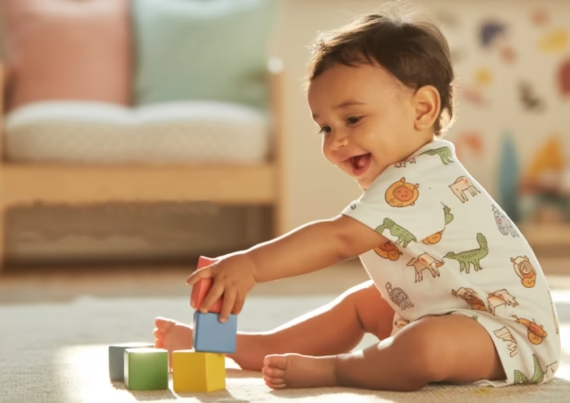How to Choose Baby Clothes for Eczema-Prone Skin
As a parent, seeing your baby struggle with eczema can be heartbreaking. The constant itching, the red patches, and the sleepless nights are a nightmare. You’ve tried everything from creams to special baths, but have you considered the clothes they wear every single day? It might surprise you, but the fabric touching your baby’s delicate skin can be a major trigger for eczema flare-ups.
This ultimate guide will break down how to choose baby clothes that soothe, not irritate, eczema-prone skin. We’ll dive into the best fabrics, what to avoid, and even share some laundry secrets that will make a world of difference. This isn’t just about fashion; it’s about comfort and relief for your little one.

With 17 years of experience, petelulu provides a full range of
manufacturing services from design to delivery.
Start from scratch , Create your own brand.
17+
serving top 10 American brands
15+
serving top 10 Australian brands
12+
serving top 10 European brands
Contact us to get the quote.👇
The Fabric Fix: Why Material Matters Most for Eczema
Eczema is an inflammatory skin condition, and for babies, it often appears as dry, itchy, and sensitive skin. The wrong fabric can act like sandpaper, causing friction and trapping heat, which leads to sweating—a known eczema trigger. The key is to find materials that are soft, breathable, and allow air to circulate freely.
-
Breathability: Fabrics that trap heat and moisture can create a breeding ground for bacteria and intensify the itch-scratch cycle. Natural fibers are generally better at allowing the skin to breathe.
-
Friction: Rough textures, prominent seams, and even clothing tags can constantly rub against sensitive skin, causing irritation. Smooth, pliable fabrics are a must-have.
-
Chemicals: The dyes, finishes, and fire retardants used in some clothing can contain harmful chemicals that act as skin irritants.
The Best Fabrics for Eczema-Prone Babies
When it comes to soothing your baby’s skin, a few fabrics stand out as the gold standard.
1. Organic Cotton: Soft, breathable, and highly absorbent, organic cotton is a top choice. The “organic” part is crucial, as it ensures the cotton is grown without the use of synthetic pesticides or fertilizers, which can leave behind irritating residues. A great benchmark is the Global Organic Textile Standard (GOTS) certification, which guarantees the fabric is free from harmful chemicals from farm to final product.
2. TENCEL™ Lyocell: This semi-synthetic fabric, made from sustainably harvested wood pulp, is a game-changer for sensitive skin. It’s exceptionally smooth, has excellent moisture-wicking properties (even better than cotton), and is highly breathable. TENCEL™ fibers are known to be gentle and frictionless, which is why they are often recommended by dermatologists for children with atopic dermatitis.
3. Silk: While a more luxurious option, silk is naturally smooth and soft, reducing friction on the skin. It’s also a temperature regulator, helping to keep your baby cool in the summer and warm in the winter. Look for 100% untreated silk to avoid any chemical additives.
4. Bamboo Fabric: This is a popular choice due to its softness. However, it’s important to note that most bamboo fabric is actually a type of rayon, created through a chemical-intensive process. While it can still be a good option for some, always check for certifications like OEKO-TEX Standard 100 to ensure it’s free of harmful substances.

With 17 years of experience, petelulu provides a full range of
manufacturing services from design to delivery.
Start from scratch , Create your own brand.
17+
serving top 10 American brands
15+
serving top 10 Australian brands
12+
serving top 10 European brands
Contact us to get the quote.👇
Fabrics to AVOID When Your Baby Has Eczema
Equally important as what to wear is what not to wear. Avoiding these fabrics can significantly reduce the risk of flare-ups.
-
Wool: While a natural fiber, the coarse texture of traditional wool can be a major trigger for itching and irritation. Even fine merino wool, while sometimes tolerated, can be a gamble for highly sensitive skin.
-
Synthetics (Polyester, Nylon, Spandex): These materials are non-breathable and trap heat and sweat against the skin, creating the perfect environment for eczema to thrive. They also often contain chemical dyes and finishes that can be irritating.
-
Fleece: Though it feels soft to the touch, fleece is a polyester-based synthetic that can cause overheating and sweating, leading to an eczema flare.
It’s Not Just the Fabric: Key Features to Look For
Beyond the material itself, a few design elements can make a world of difference.
-
Seamless Designs: Rough seams and stitching can rub against your baby’s skin. Look for flat-stitched or seamless clothing to minimize friction.
-
External Labels and Tags: Scratchy tags are a nightmare for sensitive skin. Many brands now use tag-free designs or place labels on the outside of the garment. If a tag is present, snip it off carefully.
-
Loose-Fitting Clothes: Tight clothing can restrict airflow and cause rubbing. Opt for loose, comfortable clothes that allow the skin to breathe.
The Final Step: Laundry Tips That Make a Huge Difference
Even the best clothes can become irritating if washed incorrectly.
-
Use a Hypoallergenic Detergent: Choose a fragrance-free, dye-free, and hypoallergenic laundry detergent. Brands with the National Eczema Association (NEA) Seal of Acceptance are a safe bet.
-
Skip Fabric Softeners: Fabric softeners and dryer sheets leave a residue on clothes that can trigger a reaction. Ditch them completely.
-
Double-Rinse: Running an extra rinse cycle ensures all detergent residue is completely removed from the fabric.
Conclusion
Finding the right baby clothes for eczema-prone skin doesn’t have to be a guessing game. By focusing on breathable, natural fabrics like organic cotton and TENCEL™, avoiding common irritants like wool and synthetics, and adopting a gentle laundry routine, you can make a huge difference in your baby’s comfort. This isn’t just about buying new clothes; it’s about creating a safe and soothing environment for your baby to thrive in. Start with one simple change, and watch the relief begin.
About the author
Xhiney, founder of Petelulu, brings over 20 years of experience in children’s wear design, production, and international trade. A contributor to Children’s Wear and Junior magazines, Xhiney has spent 17 years working with high-end children’s wear brands in Europe and the U.S., offering expert insights and support.
